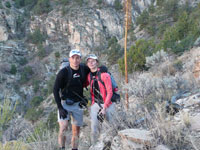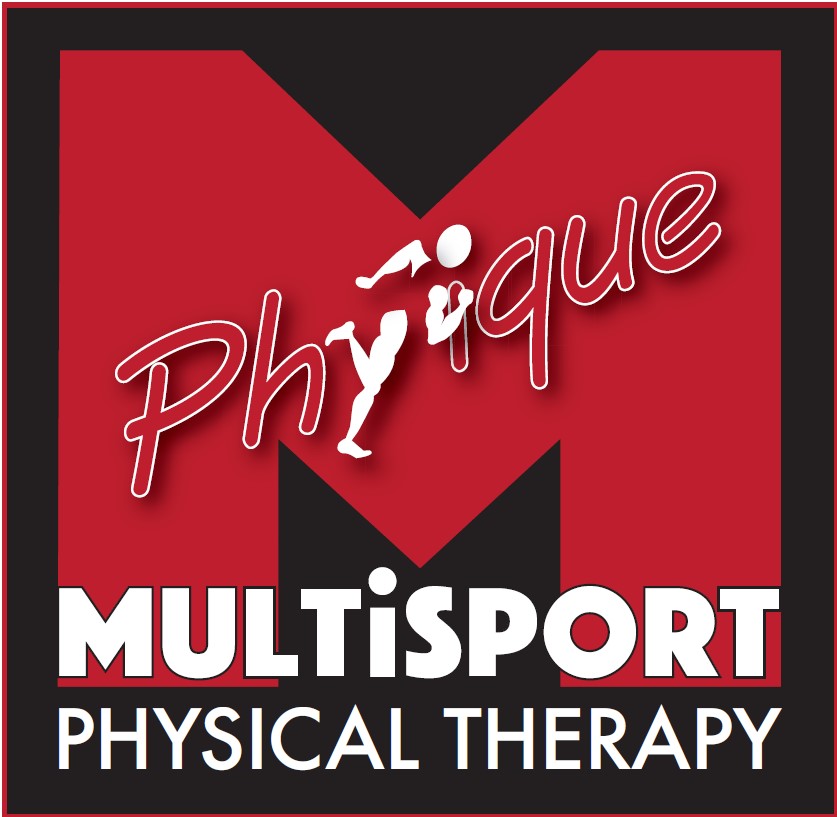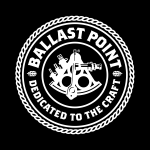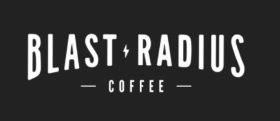Philippe Krebs

I recently had the pleasure of talking triathlon with the Tri Club's Philippe Krebs. Philippe absolutely crushed the competition at Ironman Arizona on 11/23/08 with the super fast time of 9:08:21 to win the men's 30-34 age group. Please join me as we get to know this fast friend of the TCSD.
Craig: What was your athletic background prior to triathlon?
Philippe: First I should probably introduce the context, since sports in Switzerland are integrated in a different way in the community and educational system than is the case in the USA. Here, sport in general is part of the culture, well regarded and highly covered by the media. High schools and colleges have teams of diverse disciplines which are entities supported within the frame of the school. This is possibly the ideal constellation to promote excellence in sport since education and team activities are directly linked. On the other hand, a departure from your school means leaving your team. Furthermore there are only a few clubs you can join on a private basis that will provide you the platform to still compete at an amateur level and/or in a league.
In Switzerland, general PE is mandatory in all schools. But other than that the schools usually don’t offer a sports program. In order to train and compete in a sport in Switzerland, you have to join a club. Sports clubs are partly supported by federal funds, but activities such as training with a team or competitions are privately organized. Clubs and teams are not integrated in the frame of a school. This structure is thus less supportive of elite sport since education and competitive sport – i.e. training hours and competitions – are not combined and usually even conflicting. On the other hand, this setup maybe renders competitive sport more accessible to the public.
My parents registered me for swim classes when I was about 8 years old; mainly for safety reasons and to ensure I learned proper technique. I started participating in small local races when I was about 12. However, I only began to train regularly at the age of 15. My home town, Fribourg/Freiburg (French and German names) is small (a bit more than 30,000 inhabitants) and therefore has only a limited infrastructure for water sports. For this reason it was impossible to swim more than 4 times a week. Our coaches were mostly college students who were former swimmers. Larger cities have better pool access and swim teams are commonly coached by professional trainers twice a day, 6 days a week. Only late in my swim career– at the age of 18 – did I break the one minute mark for 100 meter freestyle. Due to the generally mediocre level of the Swiss swimming, this was still good enough for me to race at a national level, although finishing in the lower quarter because of my obvious lack of training. Only the most talented of my teammates made it sometimes to the finals.
At the same age, I was trained as a swim coach and also as a Boy Scout leader. Besides swimming competitively I also taught very young (5-7 years old) but also older (9-12 years old) kids how to become confident in water, the principles of a good body position and the basics of the different strokes. Furthermore, since I was one of the oldest active members of the club, I was responsible for the weekly out-of-the-water physical education of my teammates, which consisted in strengthening exercises using the weight of the body and basketball and unihockey (an indoor form of hockey using plastic sticks and a light ball). These occupations were personally very rewarding. Furthermore, the technical knowledge acquired during the theoretic and practical part of my swim coaching allowed me to better analyze my own stroke and correlated with significant improvements of my times. I stayed in the swim club until I got my masters degree in biochemistry at the age of 24 and left for Zurich to start my PhD training.
Craig: How did your interest in triathlons begin?
Philippe: The swim club I was in had a triathlon division whose athletes were for the most part 5-10 years older than the swimmers. Some of them were very talented and participated at European or even world championship races. I can remember speaking to one of them who qualified for Hawaii and thought that I would never sign up for an Ironman because I found it silly and unhealthy. My brother, who is two and a half years younger, eventually left the swim club to join the triathletes. He soon became very successful and made it to the Swiss National Junior Team were he trained among others with Sven Riederer – who won the bronze medal at the Olympic Games in Athens. Therefore I already had indirect contact with the sport of triathlon quite early.
As every Swiss citizen I had to join the military when I was 19 years old. This first initiation and training part lasted for 15 weeks, after graduating from high school and before beginning my undergraduate studies. I used the money I earned during the military service to buy my first road bike – a steal frame – and rode on very irregular occasions. I raced my first triathlon – a sprint distance – when I was 20 and can remember it as a painful experience; swimming was fine as expected, but the cycling part was too long for me and my neck and lower back seemed paralyzed at the beginning of the run. At this time I only averaged about one triathlon race per year. Since I was mainly swimming and because of my weakness in the other sports I could barely train with my brother. Nevertheless I learned quite a bit from him.
I started to run and ride more regularly when I moved to Zurich, at the age of 24, to begin my PhD training. Swimming at a competitive level was too time consuming and I stopped it; running was an efficient way to maintain my fitness and cycling allowed me to discover my new environment. After one year in Zurich, I found a group of triathlon-experienced friends at the university to train with. This group of friends set the stage for me for a more serious and regular training and turned out to be decisive for my triathlon career.
Craig: What Ironman races have you done and how did you do?
Philippe:
Ironman Switzerland 2002
M25-29 21/120 10:28.13 59.17 5:39.40 3:43.44
Ironman Switzerland 2003
M25-29 13/66 9:46.23 55.21 5:15.13 3:32.10
Ironman Switzerland 2004
M25-29 DNF 52.38 5:06.13 -
Ironman Switzerland 2005 (qualification for Ironman Hawaii)
M25-29 4/28 9:28.57 51:05 5:13.43 3:21.03
Ironman Hawaii 2005
M25-29 33/198 9:37.37 57.28 5:10.28 3:21.42
Ironman Arizona 2008
M30-34 1/211 9:08.21 50.08 4:57.29 3:14.25
In 2002 I managed to get a military race slot 2 months before the race. Before race day, I had a total of 1000 miles on the bike and my longest run ever was 1:20. We had violent rain and even some hail during the bike segment which caused me to crash in a curve. I had to run with bruises on my left hip and lost the nails of my big toes. Because I pushed way too hard for what I trained I could barely walk for one week after the race and had very sore muscles for about three weeks.
In 2003, I spent one week in a bike training camp in Tuscany during the spring and swam with a new wetsuit with was much more flexible around the shoulders.
In 2004, I raced with a new road bike with aluminum frame on which I put 600 miles in Sardinia during the spring. I started the run way too fast because I absolutely wanted to qualify for Kona. I did not take enough fluids and minerals, began to have serious cramps in the legs after the half-marathon and had to quit the race because I felt dizzy while walking. I definitely learned from these mistakes.
In 2005, I spent one week in Spain to get my spring cycling mileage. In Zurich, at the Ironman Switzerland, I started more relaxed, listened to my body and definitely used my brain more. I lost the 3rd place in my age group half a mile before the finish line; still I qualified for the long-distance world championships. I was particularly happy about it since I had just passed my PhD exam two months before the race.
In 2005 in Hawaii, the swim was very rough compared to my previous races because people were more aggressive. On the bike, the conditions were mild for Hawaii with almost no wind. This in turn meant scorching heat and no clouds for the run. I was very nervous in Hawaii and absolutely wanted to finish despite any difficulties. I was very lucky that it turned out to be one of my best triathlon days.
Craig: It sounds like you improved a lot in 2008. What were the key reasons for that improvement?
Philippe: There are several factors that can explain why 2008 was my best triathlon season ever. First we had a total of 12 different guests or couples visiting us in 2007. My job as a researcher is very demanding and it is common that I have 11-12 hour work days. Therefore I can only ride my bike on weekends, if I don’t have to play tour guide for our visitors. Also during the week I can only run maximally one hour at a time, mostly during incubations in the lab or sometimes at 9 or even 10pm. For this reason, long runs have to happen on Saturday or Sunday. 2008 on the other hand was definitely less busy for us and I spent more time on the saddle.
I was reluctant in getting a triathlon bike – even for the good deal I was offered by JT Lyons from Moment Cycle Sport – and was not sure I wanted to commit to more important triathlon races than the club races. I knew I could improve just by riding my road bike more regularly. It took me a while to decide, together with my wife Danielle, because I would have to justify and sanction the purchase with races, which would mean less time with her on the weekends. The upgrade was eventually a good choice and I could rapidly see an improvement, even on the short courses of Fiesta Island. Besides the bike, I also progressively replaced my equipment with more modern parts; triathlon shoes to leave on the pedals, fast laces for the running shoes, and aero helmet. And JT was even able to obtain a prototype wetsuit for me to wear during the Ironman Arizona. The material upgrade helped noticeably. Otherwise my training is totally non-scientific; no coach to overlook everything, no defined training plan, no technical gadgets; I solely train based on my feeling and my motivation. I guess I could improve that, but I just do not have the time or possibly the willingness to do it.
After the closure of the JCC pool for renovation work, I joined the UCSD masters for swimming. This had a major impact on my stroke since it allowed me to train with other former swimmers and push harder. I even improved for longer distance swims, as compared to my performances while swimming competitively, which is quite exceptional in this sport at my age.
Also, instead of always cruising at the same pace, I included some hill sprints when I ran in the Torrey Pines park during the times cells were working for me in the incubator. This for sure strengthened my legs and, together with the TCSD races, provided me with speed trainings.
Another factor is the amount of sleep. I usually have to cope with 6-6:30 hours per night, which is not enough to fully recover, particularly when working out every day. Sleeping one hour more per night the week before a major race gives me an incredible amount of energy.
Also as mentioned earlier, I could increase the volume of my trainings, with an estimated average of 10-12 hours per week for the entire year – I do not have any training log – and 12-15 weekly hours the 5 months preceding the Ironman.
Danielle and I have healthy lifestyle and eating habits; we eat a lot of vegetables and fruit, cook every evening and we take the leftovers for lunch the next day. I think that nutrition is also an important aspect with a strong influence on performance that should not be underestimated. I am also very grateful to Danielle for all her practical and mental support.
Last but not least, I found wonderful training colleagues, who are also great friends, at TCSD and would like to acknowledge them here for making my trainings much more pleasant, but also more efficient because the training was tougher; Brandon Mills, Matt Dixon, Michal Jager, Shane Buysse, Sean Silberman and sometimes also Jim Vance, Paul Todd, Isaac Smead and Brendan Wolters.
Craig: Tell me about your race at Ironman Arizona. How did your day go?
Philippe: The entire season and the preparation for the Ironman Arizona went very well and I was lucky to remain free of injuries and accidents. However, a few weeks before the event I slipped with my flip-flops on the pedal of my commuting bike and hit the headset with my knee; I ended up with eight stitches. Fortunately, the cut healed very quickly; still I had to rest one week. On top of this, I caught a cold two weeks before the race when I was in Boston for a conference. I was apprehensive about the conference because I expected not to sleep much and knew that it would be quite a party atmosphere after the presentations. Luckily I completely recovered a few days before the race, with 3 pounds less; almost optimal for the race. Well, I guess the training volume done 5-10 days prior to such a long competition does not change the general fitness much; on the contrary, it could probably negatively affect it. Nevertheless, those events were also mentally stressful.
Together with my wife Danielle, Sergio Gurrieri (who came to find inspiration and incentive for his first Ironman and to ensure a spot for Ironman Arizona 2009), and my friends Jacqueline and Erik from Switzerland, who live now in Berkeley, we stayed in a hotel with studios in Tempe, which allowed us to cook our own meals. I am indeed very picky about food before long races. Erik, who was some sort of mentor for me in Zurich, had just finished Ironman Hawaii for probably the 10th time less than two months before and he signed up for the race mainly because I was doing it.
I rode part of the bike course two days before the race, together with Brandon Mills, Matt Dixon and JT Lyons, who were all in Arizona to compete. This was probably one of the scariest rides I ever did; there was a lot of traffic on the roads and I feared that some stupid accident would happen; but everybody went home safe. I have to confess that I was extremely stressed those 2 days before the race. There are so many equipment parts you have to prepare and you better not overlook any of them: nutrition, bike, swim stuff, etc… Therefore I stayed focused and not very talkative. I pre-warned Sergio about it.
Right prior to the swim start, a little wave splashed my face and put my contact lenses out of focus. I thought at this time that the race was already over for me because of my strong myopia. Luckily, I could readjust at least one lens by the time the race started. After half a mile I recovered clear vision and a bit later found two contenders to swim with. Since they were moving at a good pace, I just cruised with them to preserve my energy, since I knew I could not pass them. I felt very good for the swim and came out of the water one minute faster than my personal record, albeit with reduced effort.
On the first lap of the bike course, I was surprised to catch male professionals since they started ten minutes ahead of the amateurs. Rather the opposite happened to me in previous races in Switzerland, where all participants used to start at the same time. For the first hour, I had the impression to be alone in the middle of the desert and for almost the entire ride I had to pace myself. I do not like that at all, because it is mentally tougher and because I tend to reach a sub-threshold plateau. Much fewer competitors passed me than usual and those who passed were rapidly overtaken again. I had slight cramps in the legs and did not feel particularly well, probably because of the intake of too much liquid; I drank a lot, because of the very dry conditions. The rice “sausages” prepared by Danielle in the morning were fantastic and helped much – thank you Tim Neuschwander for the tip! They were made of overcooked, salty sticky rice rolled in plastic foils; some sort of home-made gel/paste. Indeed, I need to have something salty to eat for my stomach but mainly because my teeth become sensitive to the sweet with the time.
I was very surprised about my first sub five hour bike performance; still my legs were not too sore and I could quickly find a decent running pace. The second lap on the run was a bit more problematic; I had to hit the restrooms because of intestinal issues, take salt for the latent cramps and also had a few gels because I felt dizzy. I knew that there were only a few amateurs ahead of me and I did not want to jeopardize a potential slot for Kona while pushing too hard; cruising was probably the smartest option. At the beginning of the last loop, Danielle told me that I was in the front of the amateurs and possibly even first in my age group; she had a phone call with my parents who were following the race from Switzerland from the Internet and who had thus the split times and rankings. Also she informed me about my friends racing and I was glad to hear that everybody was doing fine. A bit later I found an athlete from Coronado Island to run with – he had fortunately two more laps to complete; he was not a TCSD member, but I told him he absolutely should join – which gave me strength and motivation to make a negative split. This was excellent proof of the importance of the mind in such a long race. I was of course happy to finish and very surprised about my performance. I initially thought that a top 3 position could be possible if I had optimal race conditions, which was not really the case. It was great and very unique to see my friends and all the TCSD supporters during the race!
Craig: What do you recommend for someone who is planning to do their 1st triathlon in 2009?
Philippe: For this I have a very easy and cheap recipe: join TCSD, participate in the various swim and run workouts to meet new friends and training partners, pump the tires of your bike – or even better borrow a road bike from a friend – and ride it a few times in your neighborhood. This will get you ready for the first TCSD club race on Coronado in summer 2009. Minimal costs for maximal output!
Craig: What advice would you share with someone planning their 1st Ironman in 2009?
Philippe: I would say that this requires more effort, time and money (at least for the registration fees and the travel to the event). Some friends raced an Ironman as their first triathlon and did pretty well. Apparently they trained enough and had an excellent initial endurance base. Now let’s suppose this Ironman is not your first triathlon and that you have been in the business and have exercised the three sports more or less regularly for a bit more than one year. First you should set a realistic goal based on the amount of time you have to train and your physical abilities. Then you should make sure that your form and body position in all three sports is correct or you will accumulate injuries due to the increase in training time. How is your stroke in the water? Have an experienced friend watch you on the pool deck but also under the water. Does your bike fit you? Do you suffer from pronation / supination and need orthotics? Run on trails during training to avoid an excessive unilateral stress on your tendons. Listen to your body before it is too late and allow time for recovery and regeneration. Probably everybody can train hard or accumulate miles, but doing it without getting injured is challenging. Having a good technique will also permit you to save energy. Once you get this far, I recommend progressively increasing the workout load to fulfill your race expectations. Ideally, you have training partners who help you make extended rides and long runs seem shorter and more enjoyable. Include bike-run sessions and use the TCSD races to test your equipment. Find the correct nutrition plan during your trainings if you are prone to gastric problems during races. And ask around if you have specific questions; TCSD has several experienced athletes willing to give advice. Avoid repeating their mistakes, but be sure to compare the opinions since what is true for somebody will not necessarily apply to another person. You need to feel ready and be adequately prepared to truly appreciate the race.
Craig: You obviously have had great success with triathlon. But even the great athletes make some stupid mistakes. Nobody really reads these interviews. Since it is just the 2 of us, what dumb triathlon things you have done.
Philippe: During a swim meeting in France I twice left the key to my lock in the locker after closing it. I had to ask the pool manager twice within a few hours to cut open the lock. Obviously I was not concentrating and I did not swim a personal record on that day.
I ran my first marathon in my first Ironman race with running flats that were too small and with toenails I forgot to trim and which got softened because of the rain. After this painful mistake I had to walk with sandals for a few weeks and it took me one year to have normal looking big toes.
Craig: Why did you move from Switzerland to the US?
Philippe: After a masters degree in biochemistry and molecular biology I decided to embark for a PhD program at the ETH in Zurich. The ETH is probably for Europe what MIT is for the USA. The topic of my research was immunology (the study of the immune system) and in particular in the context of the cardiovascular system. Since I liked the basic research very much I decided to go on for a so-called postdoctoral fellowship, a further training, which is usually spent abroad. Thus, two days after the Ironman Switzerland I had an interview in Amsterdam. The interview and my presentation went very well and I tried to dissimulate my state of soreness while we were walking the stairs to visit the Institute. At the dinner I was asked whether I was exercising in general and people were quite amazed to hear that I had raced only a few days before. One of the girls in the lab was a marathoner, so that everybody knew about the post-race symptoms of long-distance events. I interviewed then in San Diego, one of the hot spots for immunology in the USA, besides Boston and the Bay Area, and I interviewed with several research groups here. My wife Danielle, who got her PhD right before our trip to Hawaii for the Ironman World Championship, wanted to do something more applied than basic research. San Diego was eventually our common selection because of the prevalence of biotech and pharma companies in the area. Danielle now manages clinical studies and I work at the Scripps Research Institute, close to the Green Hospital. My research is at the interface of immunology and genetics. In my lab, we try to identify new genes or novel functions of known genes important for the defense against pathogens or tumor cells.
Craig: What are your favorite things about the TCSD?
Philippe: Don Lopez’s barbecues at the Borrego week-ends, Denise’s breakfasts after the club races and Elizabeth’s desserts at the aquathlons. But I also like the fact that the club is an exceptional platform to meet new friends. Particularly as a foreigner who would like to be integrated, it is easier and more effective to join TCSD than entering a bar and saying: “Hi. I am Philippe from Switzerland and I am looking for American friends”... Moreover, the club races, duathlons and aquathlons are the best trainings ever. I am actually surprised that more active members of the club don’t show up at these events.
Craig: Who sponsors you?
Philippe: I am sponsored by Moment Cycle Sport, which is also a sponsor of the club. I met the owner, JT Lyons, at a TCSD swim training at the JCC pool in La Jolla. We swam in the same lane since he is also a former swimmer. Of course he first made fun of my “European” Speedo swim brief and after a couple of times I bought a jammer. He convinced me to join the club and to participate in one of the races on Fiesta Island. I was very impressed by how well the race was organized for a free event and people were all easy going; there was even a free breakfast! At this time, JT was about to open his store, on which he worked for several months. I guess since I was not doing too poorly at the club races and also because he had some compassion for my old-fashioned equipment and my terrible aero position on my road bike, he proposed me a sponsorship. This surprised me very much since I did not consider myself a particularly strong athlete. I remembered my brother writing tons of letters to find only marginal support while in the Junior Triathlon National Team. JT contributed in many ways to my substantial improvement over the last year and JT and Cory Osth have become good friends of mine. JT still likes to make fun of me, the crazy European, nevertheless I try support his business as much as I can. He and Cory are really passionate about their job and excel in doing it.
As far as my profession is concerned, I had a fellowship from Europe (EMBO, European Molecular Biology Organization) and I am now “sponsored” by the Swiss National Research Foundation. Being self-funded is good for a scientist’s resume and generally it also gives you more freedom to define your line of research in the lab.
Craig: What are your triathlon goals for 2009 and beyond?
Philippe: The major event of my season will definitely be the Ironman Hawaii in October. I would be happy with a top 20 in my age group and top 150 overall. I hope to be more relaxed than in 2005 and that I will be able to go to the race with less pressure.
This spring, I would like to defend my title of overall winner at the Superfrog Half Ironman, which I won last year – a great surprise for me. However the prize money which was introduced this year is likely to attract fast professionals; this will for sure make it especially challenging for me. The race may possibly overlap with an important immunology conference in Canada and I still have to figure out how to participate in both of them.
Otherwise I have not decided yet for which of the shorter San Diego races I should sign up; they will mostly represent fast workouts for me.
After Hawaii, I may decide to take an Ironman break and possibly focus on improving my actual marathon PR (2:47.10). I qualified for the Boston Marathon last year but I think I will run it in 2010.
Of course my career and professional occupation as a scientist will determine what my triathlon activities will look like in the future. My actual situation as a postdoctoral fellow is transitory and our visa is restricted to a maximum of five years. Much will be decided based on the data I will obtain soon in the lab and the opportunities that will arise.
Craig: Philippe, the TCSD is lucky to have you. We absolutely want to keep you here in San Diego! Thank you for sharing your story. Good luck at Kona and with everything else you and Danielle are doing.








